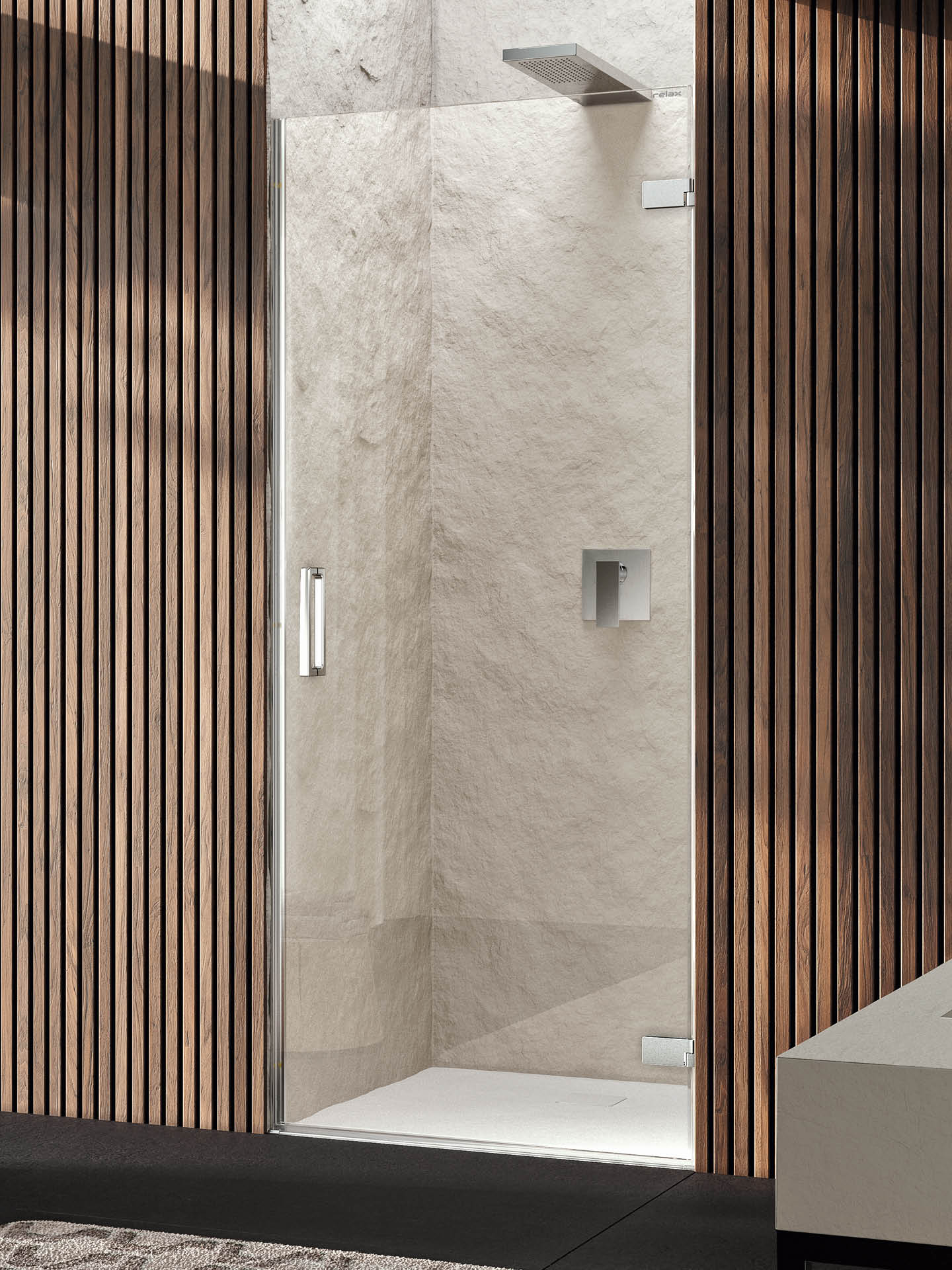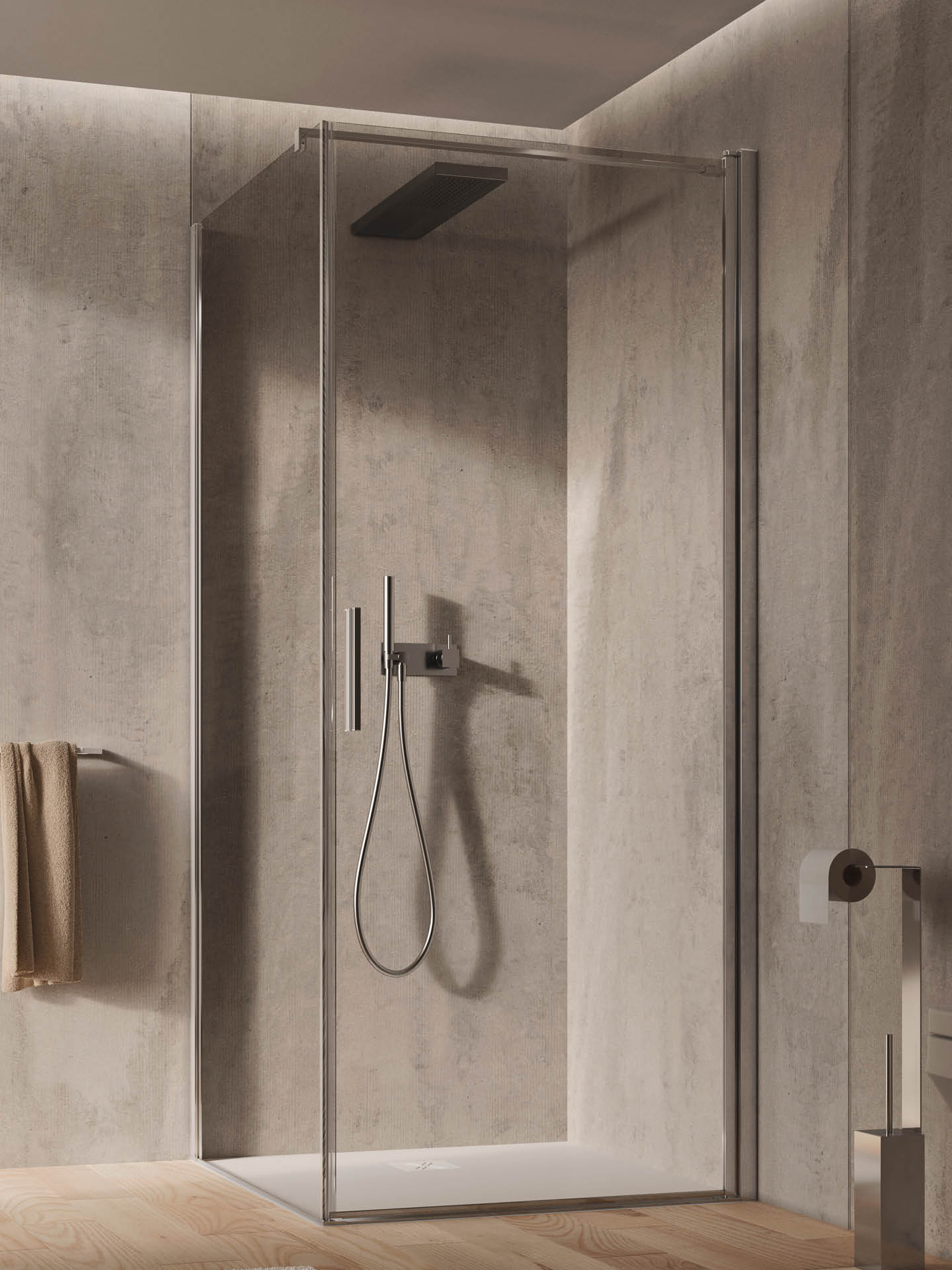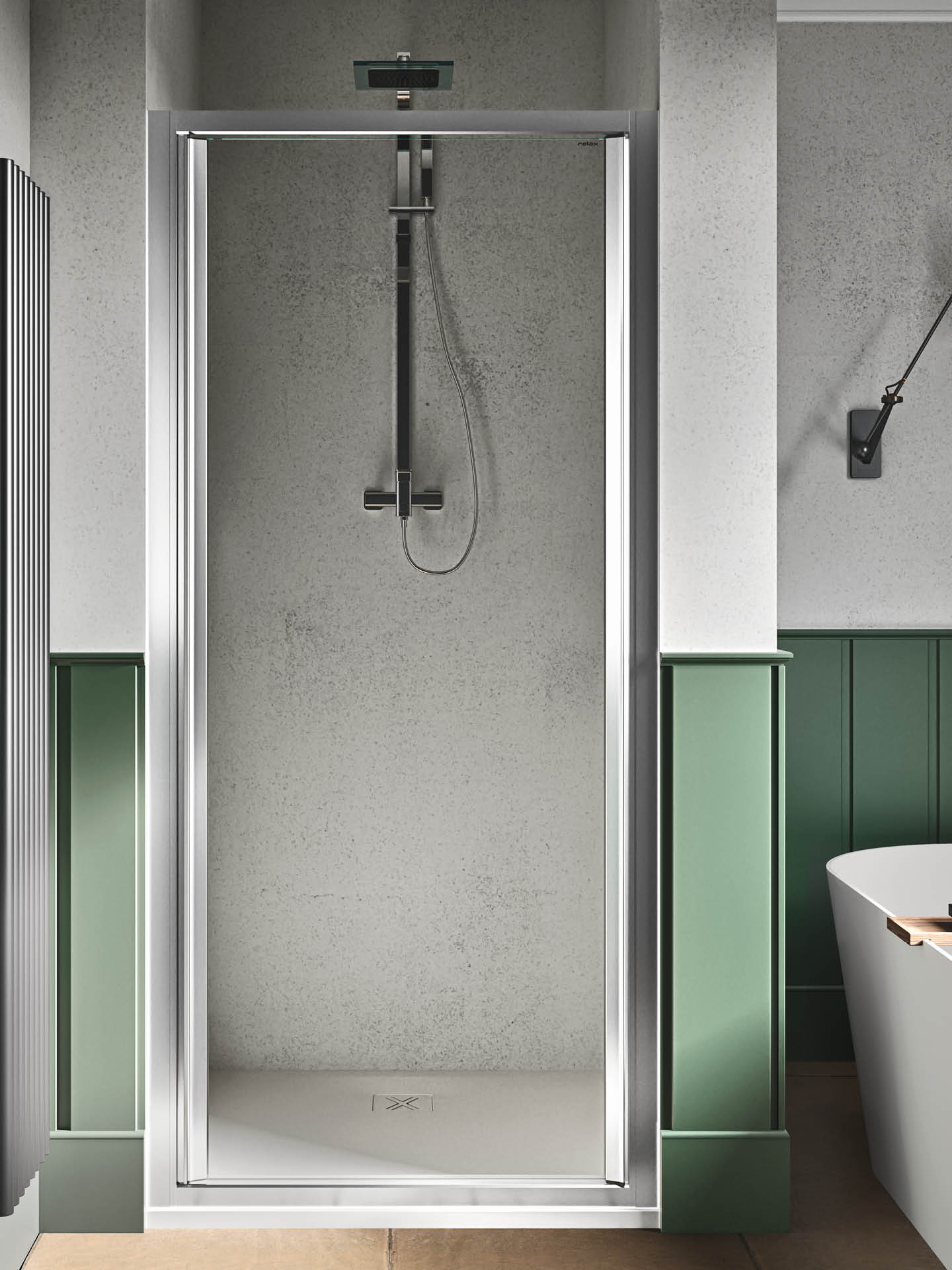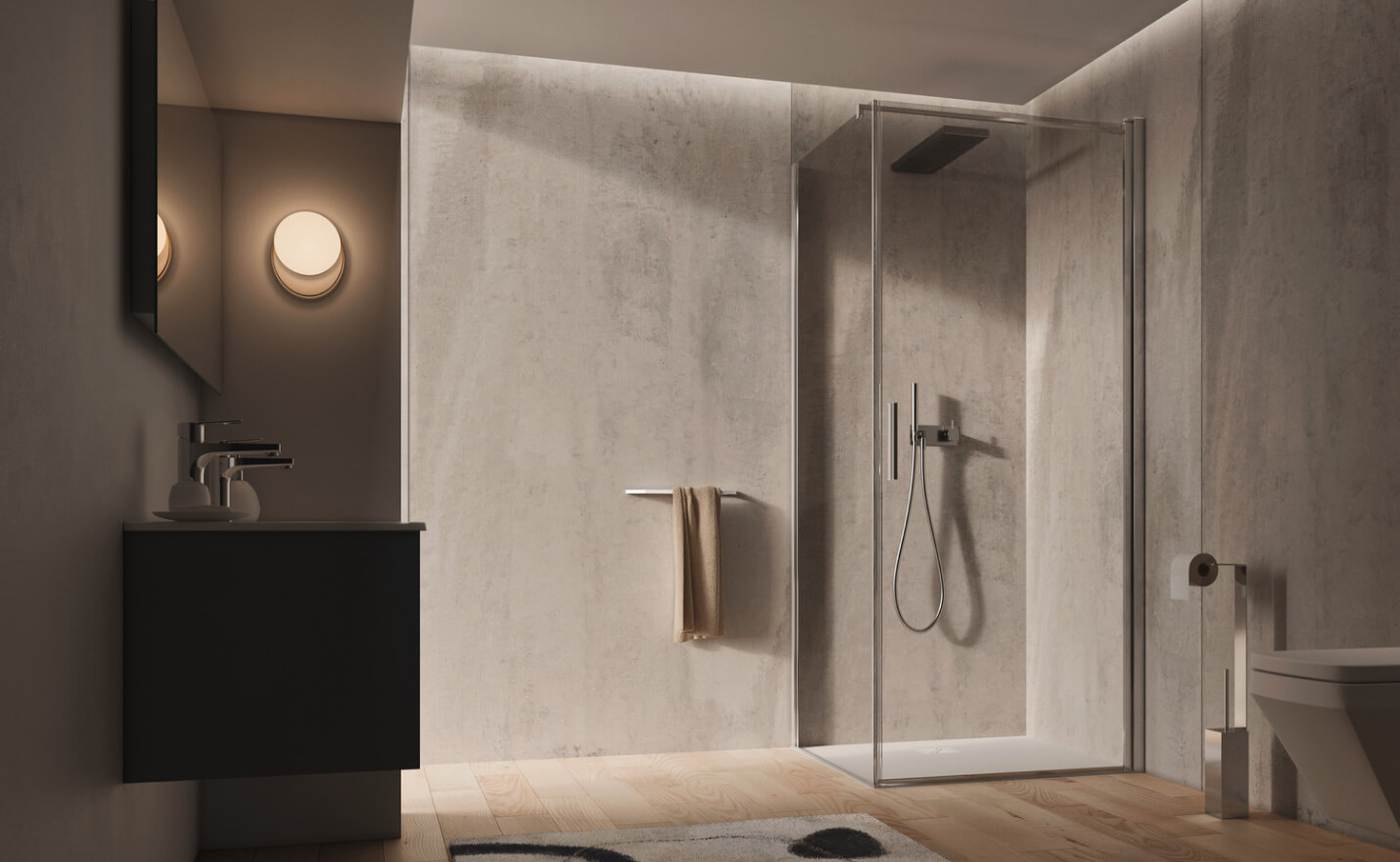Shower enclosure with hinged door
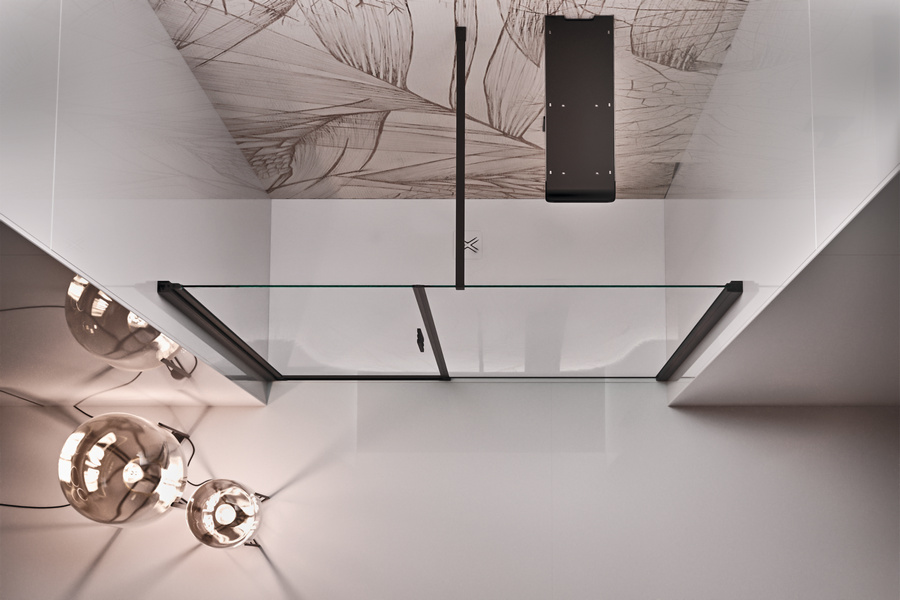
The hinged door for the shower enclosure is one of the most common. Available in endless types, it is practical and has a full opening, ideal for those with reduced mobility.
Characteristics of the hinged door
The hinged shower cabin has a door that closes on the shower tray, on the lintel or on another wall of the shower cabin. It is characterized by the hinge, usually an aluminium profile glued on the glass, mounted on the profile fixed to the wall.
In the case of shower trays installed flush with the floor, the hinge with lift-up has an added value because, when the door is opened, it is raised to prevent the lower gasket, placed on the bottom glass to retain the water leak, smearing on the floor. In this way, the seal is preserved over time. We recommend a hinged door of 100 cm maximum to ensure durability over time as the weight weighs all on the leaf itself. To manage higher measures, you can obviate by adding a fixed side.
The shower with hinged door can be mounted:
- niche with a door
- corner with two doors or a door and a fixed side
- 3 sides with one door and two fixed sides
Types of hinged door
Hinged door in niche with frame
The hinged door with frame provides in the upper and lower part a profile. It is the solution used when the shower enclosure is mounted flush with the shower tray because it increases water tightness and stability.
Hinged door in niche without profiles
The hinged door without frame is privileged for the aesthetic cleanliness given by the effect of glass without upper and lower limitations.
Advantages of the hinged door
The swing opening opens almost completely so it guarantees the best accessibility, especially appreciated by people with disabilities or who live in a condition of reduced mobility, as happens to many elderly people. For example, if the door is 90 cm, the useful space is 81 cm. The large opening facilitates cleaning inside the shower enclosure and the door itself. Requires a shower tray of at least 80×80 cm for space to be comfortable to use.
Vantaggi dell’anta a battente
L’apertura a battente si apre quasi completamente perciò garantisce la migliore accessibilità, apprezzata in modo particolare da persone con disabilità o che vivono una condizione di mobilità ridotta, come accade a molti anziani. Per esempio, se la porta è di 90 cm, lo spazio utile è di 81 cm. L’ampia apertura agevola la pulizia all’interno del box doccia e dell’anta stessa. Richiede un piatto doccia di almeno 80×80 cm perché lo spazio sia comodo da usare.
When to avoid the hinged door
If the bathroom is small, the hinged door is not recommended because it requires space in front of it for the opening, surface that could already be occupied by sanitary and furniture. In reality, there are also hinged doors that can be opened inwards, but they require a sufficiently large space to allow access to the person plus allowing the presence of the door itself.
Those who detest the dripping of the door after the use of the shower on the floor, all the more so if the latter is as delicate as certain woods, would do better to orient themselves towards another opening system, for example the sliding one, or opt for the opening inwards, if space is sufficient.
